Table of Contents:
Introduction
Benefits of Regular Façade Cleaning
The Science of Façade Cleaning
Façade Cleaning Methods
Introduction
Welcome to our in-depth guide, where we’re thrilled to unveil the transformative impact of regular façade cleaning. In this comprehensive exploration, we won’t just skim the surface; instead, we’ll dive deep into the layers of this process, revealing how it extends beyond mere aesthetics.
In this article, we’ve thoughtfully divided our journey into two parts, each shedding light on a distinct facet of the importance of maintaining a clean façade. Join us on this enlightening expedition as we uncover the hidden treasures of a well-maintained façade.
In Part One, we’ll unravel the enchantment of regular façade cleaning, emphasizing the benefits and understanding the various factors that can lead to erosion and deterioration.
Moving on to Part Two, we’ll delve into the intricacies of distinguishing between professional facade cleaning and DIY attempts. Additionally, we’ll provide valuable tips on ensuring safety during façade cleaning. Our goal is to empower you with insights to make informed choices that align with your unique needs, ensuring your property stands as a testament to cleanliness and beauty.
Benefits of Regular Facade Cleaning
Prolong the Lifespan of Your Building: Regular cleaning is pivotal in eliminating dirt, grime, and pollutants that have the potential to corrode and degrade building materials over time. Consequently, this preservation of structural integrity significantly extends the life of your property.
Enhances Visual Appeal:
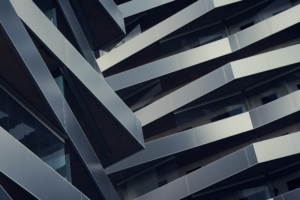
A clean façade instantly improves the overall look of your property. It creates a positive first impression on visitors, residents, and potential buyers, enhancing the curb appeal.
Increases Property Value: Maintaining a well-kept façade holds the potential to significantly enhance the market value of your property. This becomes particularly advantageous when considering plans such as selling or renting it.
Prevents Damage:
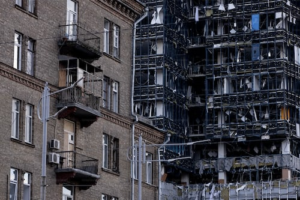
Ensuring regular cleaning practices is crucial to prevent staining, discolouration, and the growth of mould or mildew—issues that can become costly to repair if left unaddressed.
Maintains Paint and Coatings:
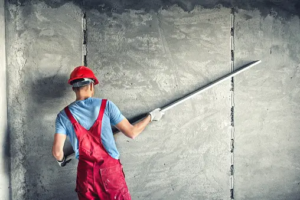
Façade cleaning plays a pivotal role in protecting and preserving exterior paint or coatings. This not only enhances the aesthetics but also saves you from the expense of premature repainting or resealing the building.
Reduces Maintenance Costs: Choosing preventative cleaning proves to be more cost-effective than addressing extensive damage or deterioration later on. This proactive approach can lead to long-term savings by minimizing the need for repairs.
Complies with Regulations: In certain regions, adherence to local regulations or building codes may mandate regular façade cleaning and maintenance. This ensures both the safety and appearance of structures.
Tenant Satisfaction:

In commercial properties, maintaining a clean and well-kept façade plays a pivotal role in enhancing tenant satisfaction. Moreover, it contributes to creating a welcoming environment for both employees and visitors.
The Science of Facade Cleaning
Understanding How Dirt and Grime Can Damage Your Facade:

Dirt and grime, seemingly harmless at first glance, can stealthily undermine the integrity and aesthetics of your building.
Abrasion and Erosion: Over time, abrasive particles in dirt can function as tiny, destructive agents, progressively wearing away the surface of your façade. Consequently, this process can lead to structural damage and unsightly surface degradation.
Moisture Retention: Accumulated dirt can trap moisture against your façade, fostering an environment conducive to biological growth and hastening the deterioration of building materials. Over time, prolonged exposure to moisture can lead to issues such as cracks, staining, and potentially mould or algae infestations.
Chemical Reactions: Within dirt and grime, certain contaminants may contain chemicals that, upon reacting with building materials, can result in discolouration and corrosion. This chemical reaction further compromises the appearance and structural integrity of the façade.
The Role of Weather, Pollution, and Biological Growth: The façade of your building serves as the first line of defence against the elements, bearing the brunt of environmental factors:
Weathering: In Singapore, the façade is consistently exposed to various weather conditions, including frequent rain and high humid temperatures. Over time, these elements can gradually weaken the facade and contribute to the accumulation of dirt and grime.
Pollution Impact:

Urban environments often expose facades to high levels of air pollution, which can include pollutants like sulfur dioxide, nitrogen oxides, and particulate matter. These pollutants can react with building materials, causing staining and corrosion.
UV Radiation: Ultraviolet (UV) radiation from the sun can contribute to the degradation of building materials, causing fading and premature ageing.
Facade Maintenance Methods
In the realm of facade maintenance, various methods are employed to address the diverse needs of different surfaces and situations. Each method comes with its unique set of advantages and is best suited for specific scenarios.
1. Pressure Washing for Deep Cleaning:
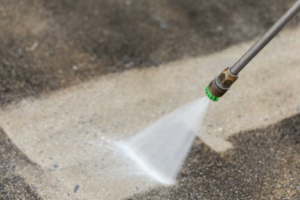
Pressure washing, also known as power washing, is a high-pressure water cleaning method that is effective for removing dirt, grime, mould, and other contaminants from exterior surfaces.
How it works:
Utilising a high-pressure jet of water, this method effectively dislodges and removes accumulated dirt and contaminants. The force of the water can be precisely adjusted to accommodate the surface material and meet specific cleaning requirements.
Best Use:
Pressure washing is suitable for durable and non-porous surfaces such as concrete, brick, and some types of stone. It’s highly effective for deep cleaning and removing stubborn stains and organic growth like moss and algae.
2. Soft Washing for Delicate Surfaces:

Soft washing provides a gentler alternative for cleaning surfaces that may be more delicate or susceptible to damage compared to high-pressure washing.
How it works:
Soft washing combines low-pressure water delivery with specialised cleaning solutions. The cleaning solution does most of the work, breaking down and removing contaminants.
Best Use:
Soft washing is ideal for more fragile surfaces, such as wood, stucco, and painted surfaces. It’s effective for removing algae, mould, and mildew, as well as for general maintenance cleaning.
3. Rope Access System:

A Rope Access System provides a secure method for working in challenging locations. By utilising ropes and gear, workers can safely reach their work spots. The primary objective of employing rope access is to execute tasks efficiently while prioritizing safety, and minimising the risk of accidents or complications.
How it works:
With this method, workers go up and down from fixed points on top of a building. They wear harnesses to stay safe and flexible while they do tasks like cleaning windows, cleaning the outside of the building (especially glass parts), fixing seals, installing glass, taking care of maintenance for tall buildings, and more.
Best Use:
Rope access works well for tall buildings, irregular designs, and tight spaces. It offers efficient access, even in crowded urban areas.
4. Waterproofing:
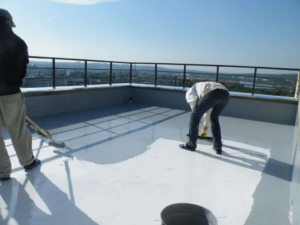
Waterproofing buildings means creating a protective layer on foundations, roofs, walls, and other parts of the structure to stop water from getting in. In simple terms, it’s about making these surfaces resistant to water and keeping them dry.
How it works:
To achieve waterproofing and weatherproofing, various sealants, such as silicone, polyurethane, acrylic, and concrete, are commonly applied. The key objective is to establish a robust protective barrier, effectively shielding your structure against moisture and damage caused by weather-related elements.
Best Use:
Frequently encountered issues primarily revolve around water, stemming from various sources and taking diverse forms. Consistently, water poses a significant threat to structural integrity. This threat manifests through infiltration in critical areas, including walls, sills, lintels, claddings, extensions, and the junctions between beams and brickwork.
Conclusion:
Regular façade cleaning not only preserves aesthetics but also extends your building’s lifespan, enhancing property value. This prudent choice benefits homeowners and investors alike, leading to reduced maintenance costs. Embracing safety and eco-friendly options ensures compliance with regulations and promotes sustainability. Moreover, understanding the varied methods for cleaning different types of dirt and stains is crucial. Stay tuned for Part 2, where we’ll delve into the intricacies of facade cleaning and provide practical insights into the cleaning process.




